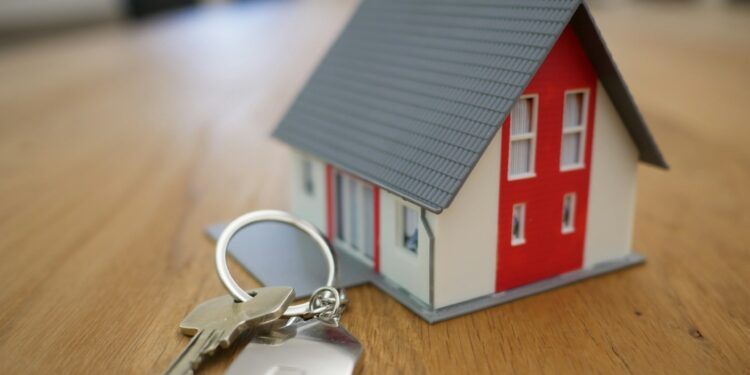Home insurance is a vital component of protecting one of your most significant investments—your home. Whether you’re a first-time homeowner or have owned property for years, understanding the intricacies of home insurance is essential to ensuring that you’re properly covered in case of unexpected events. From safeguarding against natural disasters to covering personal liability, this blog will explore the key aspects of home insurance that every homeowner should know.
The Basics of Home Insurance Coverage
Home insurance policies offer various types of coverage to protect both the structure of your home and your personal belongings. Knowing what is typically covered will help you choose the right policy for your needs and avoid costly surprises in the event of a claim.
Dwelling Coverage
Dwelling coverage is the portion of your home insurance that protects the physical structure of your home—its walls, roof, foundation, and built-in appliances. If your home is damaged by a covered peril, such as fire, windstorms, or vandalism, dwelling coverage pays for repairs or rebuilding costs. It’s important to make sure that your dwelling coverage limits are sufficient to cover the total cost of rebuilding your home in the event of a total loss, considering current construction costs in your area.
Personal Property Coverage
In addition to protecting the structure of your home, home insurance also covers your personal belongings, such as furniture, electronics, clothing, and appliances. Personal property coverage helps pay for the repair or replacement of these items if they’re damaged or stolen due to covered perils. While some policies offer actual cash value coverage, which factors in depreciation, others offer replacement cost coverage, which pays for the full cost of replacing the items at current market prices. Consider opting for replacement cost coverage to ensure you’re fully compensated for your losses.
Liability Coverage
Home insurance also includes liability coverage, which protects you if someone is injured on your property or if you accidentally cause damage to someone else’s property. For example, if a guest slips and falls on your driveway, liability coverage helps pay for their medical bills and any legal fees if you’re sued. Standard policies typically offer liability limits starting at $100,000, but higher limits may be necessary if you have significant assets to protect. Consider reviewing your liability coverage with your insurance agent to ensure you’re adequately covered.
Understanding What’s Not Covered
While home insurance provides broad protection, there are certain exclusions and limitations that homeowners should be aware of. Understanding what’s not covered will help you take additional steps to safeguard your property and financial well-being.
Flood and Earthquake Exclusions
One of the most common misconceptions about home insurance is that it covers all natural disasters. However, most standard home insurance policies do not cover damage caused by floods or earthquakes. If you live in an area prone to these risks, you’ll need to purchase separate flood or earthquake insurance policies. Flood insurance is typically offered through the National Flood Insurance Program (NFIP), while earthquake insurance can be obtained through private insurers. Assess your risk based on your location and consider adding these policies for additional protection.
Maintenance-Related Damage
Home insurance is designed to protect against sudden, unexpected events—not gradual damage caused by a lack of maintenance. For example, if a pipe bursts and floods your home, the resulting water damage would likely be covered. However, if your roof leaks due to years of neglect, the repairs may not be covered. It’s essential to perform regular maintenance on your home and address minor issues before they turn into major problems that insurance won’t cover.
High-Value Items and Coverage Limits
While personal property coverage protects your belongings, there are often limits on certain high-value items, such as jewelry, artwork, and electronics. For example, a standard policy may only cover up to $1,500 for jewelry theft, which may not be enough if you own valuable pieces. To ensure that your high-value items are fully covered, consider purchasing additional coverage, known as scheduled personal property or a personal articles floater. This allows you to specifically insure valuable items for their full appraised value.
How to Determine the Right Amount of Coverage
Choosing the right amount of home insurance coverage can be tricky, but it’s crucial to ensure that you’re adequately protected in the event of a loss. Here are some factors to consider when determining the appropriate coverage for your home.
Replacement Cost vs. Market Value
When insuring your home, it’s important to distinguish between its replacement cost and its market value. Replacement cost refers to the amount it would take to rebuild your home from the ground up, including labor and materials. Market value, on the other hand, is the price your home would sell for on the open market, which includes factors like the value of the land and local real estate trends. Home insurance should be based on replacement cost, not market value, as it ensures that you can rebuild your home if it’s completely destroyed.
Evaluate Your Belongings
Take a thorough inventory of your personal belongings, including furniture, electronics, clothing, and other valuables, to determine how much personal property coverage you need. There are home inventory apps available that can help you catalog your items and estimate their value. Be sure to update your inventory regularly, especially after making major purchases. Having an accurate inventory will also make the claims process smoother in the event of a loss.
Consider Umbrella Insurance
If you have significant assets or face a higher risk of being sued, consider adding an umbrella insurance policy. Umbrella insurance provides additional liability coverage above and beyond the limits of your home insurance policy. This type of policy can be especially beneficial if you own a swimming pool, have a high-profile career, or host frequent social gatherings. Umbrella insurance is relatively affordable and can offer peace of mind knowing that your assets are protected in case of a large liability claim.
Factors That Affect Your Home Insurance Premiums
Home insurance premiums vary based on several factors, and understanding these factors can help you make informed decisions when purchasing or renewing a policy. Knowing what influences your premium can also help you identify opportunities to lower your costs.
Location and Risk Factors
The location of your home plays a significant role in determining your insurance premium. Homes in areas prone to natural disasters, such as hurricanes, wildfires, or tornadoes, tend to have higher premiums due to the increased risk of damage. Additionally, homes in high-crime areas may also have higher premiums due to the risk of theft or vandalism. When shopping for a home, consider the location’s risk factors and how they might affect your insurance costs.
Home Features and Age
The age, construction materials, and features of your home can all impact your insurance premium. Older homes may have outdated electrical, plumbing, or roofing systems that are more likely to fail, leading to higher premiums. On the other hand, homes with safety features like fire alarms, security systems, or impact-resistant windows may qualify for discounts. If you’re planning renovations, consider upgrades that could reduce your insurance costs, such as installing a new roof or modernizing your electrical system.
Claims History
Both your personal claims history and the claims history of the property can influence your home insurance premium. If you’ve filed multiple claims in the past, insurers may view you as a higher risk and charge you a higher premium. Additionally, if the previous owner of the home filed several claims, it may suggest that the property is prone to issues. To avoid surprises, ask for a Comprehensive Loss Underwriting Exchange (CLUE) report when purchasing a home, as it will detail any past claims made on the property.
Tips for Saving on Home Insurance
Home insurance is an essential expense, but there are several ways to save on your premiums without sacrificing coverage. Implementing these strategies can help lower your costs while still ensuring that your home is well-protected.
Increase Your Deductible
One of the easiest ways to lower your home insurance premium is by raising your deductible—the amount you pay out of pocket before your insurance kicks in. While a higher deductible means you’ll pay more in the event of a claim, it also results in lower monthly premiums. Be sure to choose a deductible that you can comfortably afford in case of an emergency.
Bundle Your Policies
Many insurance companies offer discounts if you bundle multiple policies, such as home and auto insurance, with the same provider. Bundling can simplify your insurance management while also saving you money. Be sure to ask your insurance provider about available discounts for bundling and other opportunities for savings, such as loyalty discounts or discounts for paying your premium annually instead of monthly.
Improve Home Security
Installing safety features in your home can reduce your insurance premium by lowering the risk of theft or damage. Common security upgrades include adding deadbolts, smoke detectors, a monitored security system, or fire sprinklers. Some insurers even offer discounts for homes with specific safety certifications, such as being located in a gated community or having a certified disaster-resistant roof.
Home insurance is essential for protecting your property, belongings, and financial security. Understanding the basics of coverage, knowing what’s excluded, and determining the right amount of protection are key to making informed decisions. By evaluating your coverage needs, managing your premiums, and considering additional options like flood insurance or umbrella policies, you can ensure that your home remains safeguarded against life’s uncertainties. Regularly reviewing your policy with your insurance provider will help you stay covered as your circumstances and the market change.
Want to stay informed about the best insurance practices and tips? Subscribe to our newsletter for expert advice, and take charge of your insurance!
















